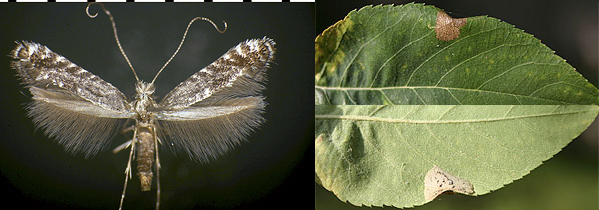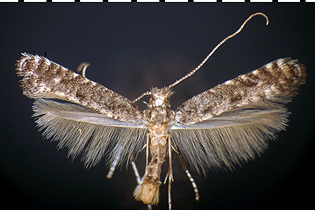
Parornix includes about 20 described North American species, many of which occur east of the Rocky Mountains. Larvae of a sizeable number of Parornix species feed as leaf miners on various plants in the family Rosaceae; other Parornix species feed on such plants as Kalmia (Ericaceae), Betula (Betulaceae), and Vaccinium (Ericaceae). Adults of most species are similar in appearance, being gray moths with pronounced white strigils along the costal margin of the forewing; male genital morphology is useful in identification. Adults of some species are common at UV light in deciduous forest in summer.
Parornix sp., probably geminatella (Fig. 1) feeds in an underside tentiform leaf mine (similar to that of typical Phyllonorycter) on rosaceous trees, including shadbush, Amelanchier arborea.

Figure 1. Parornix sp., probably geminatella. Adult, and upperside and underside views of leaf mine on shadbush, Amelanchier arborea (Rosaceae).
Parornix sp. 2 (Fig. 2) feeds in a white, puffy upperside blotch leaf mine on black cherry, Prunus serotina (Rosaceae).

Figure 2. Parornix sp. 2. Adult, reared from upperside blotch leaf mine on black cherry, Prunus serotina (Rosaceae).